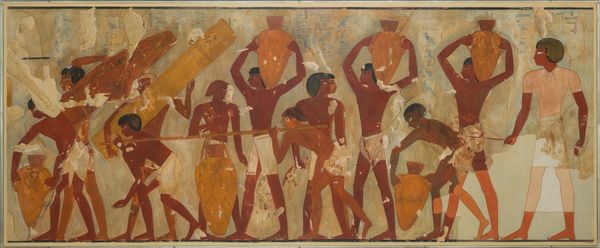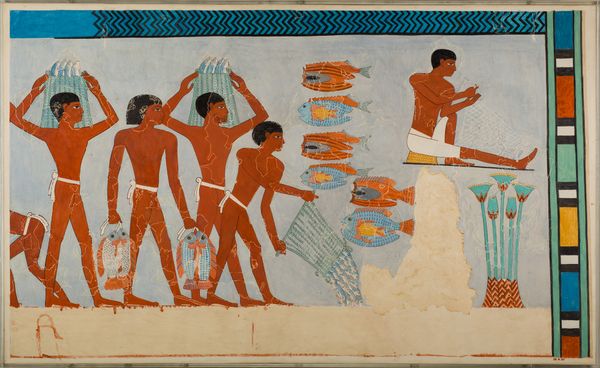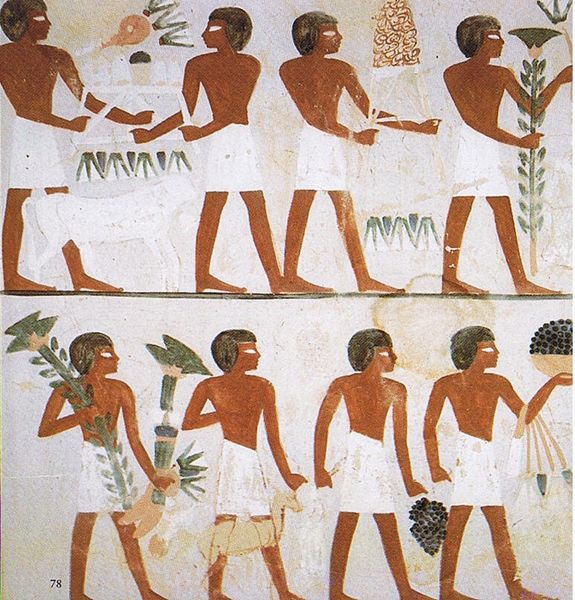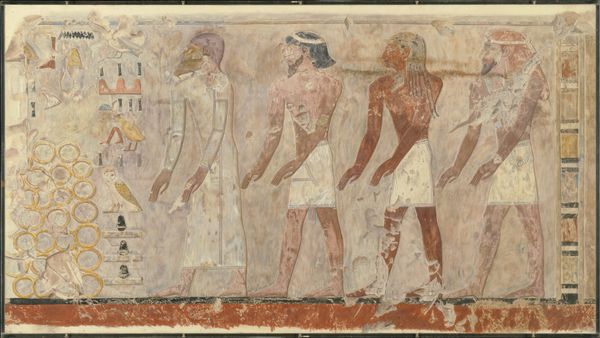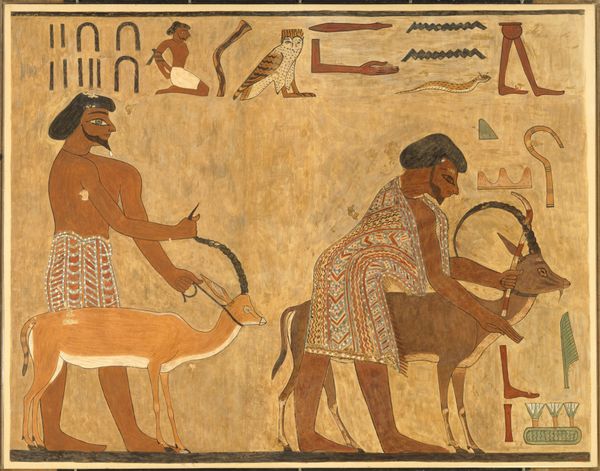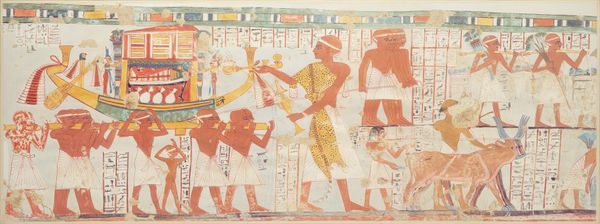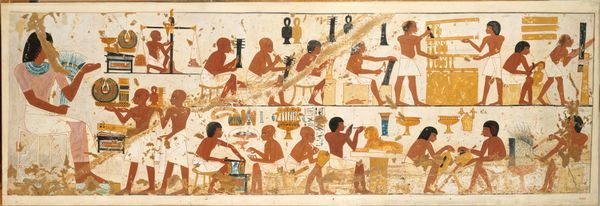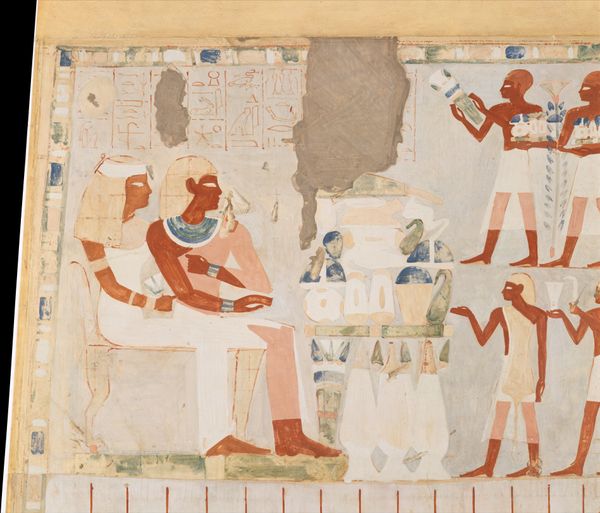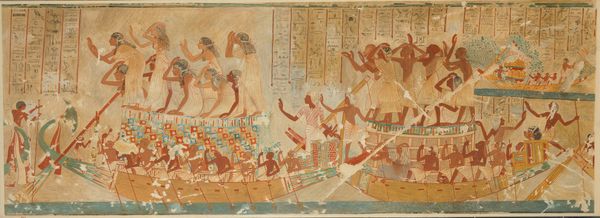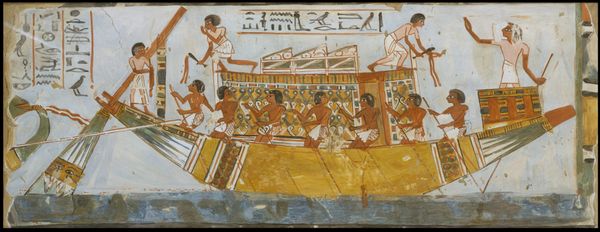
painting, fresco
#
water colours
#
narrative-art
#
painting
#
landscape
#
ancient-egyptian-art
#
figuration
#
fresco
#
ancient-mediterranean
#
genre-painting
#
mixed media
#
watercolor
Copyright: Public domain
Curator: The artwork we're looking at is titled "Harvest Scenes," dating back to approximately 1411 BC from Ancient Egypt. It seems to be done in mixed media. What's your initial reaction to it? Editor: Immediately, I’m struck by the division of labor so meticulously depicted. The piece has a vibrant yet earthy feel, with all the figures so deliberately arranged, a true narrative unfolding before our eyes. Curator: Indeed. When we look closely, we can see how the fresco was likely created – the layering of pigments, the clear delineation between figures, and the background suggests a very methodical process. The artist or artists have captured this entire system of agriculture from the cutting of wheat to the winnowing. Editor: The symbolism tied to agriculture is incredibly powerful. It represents life, death, and rebirth. These workers aren't merely harvesting; they are participating in a cycle that sustains their civilization. Look how their bodies are rendered! We see echoes of idealized strength but the actual labor, how backs are bent in real work is accurately shown, almost giving these common laborers dignity. Curator: It is tempting to imagine this artwork created by artisans trained within a very specific context. What kinds of tools they had at their disposal would also determine what we're looking at right now in terms of pigments and types of brushwork. The colors aren't accidental, nor are the forms entirely stylistic. Editor: Precisely. The ochre hues used for the wheat immediately conjure associations with sun and sustenance, mirroring a deeper connection to solar deities and fertility cults common to the region and timeframe. The symbolic significance, how each step becomes its own sacred moment. Curator: Yes, it shows so clearly what ancient people believed were important things. These were life-giving tasks being represented, this fresco’s surface then, isn’t just aesthetic. Editor: Not at all; it becomes a conduit to the past. Reflecting upon the cycle of existence. Curator: Viewing “Harvest Scenes” through both the material and iconographic dimensions reveals not only technical achievements but also deeper meanings woven into the cultural and laboring patterns of life from a civilization long past. Editor: Absolutely. It makes you appreciate the visual vocabulary passed through the ages.
Comments
No comments
Be the first to comment and join the conversation on the ultimate creative platform.

